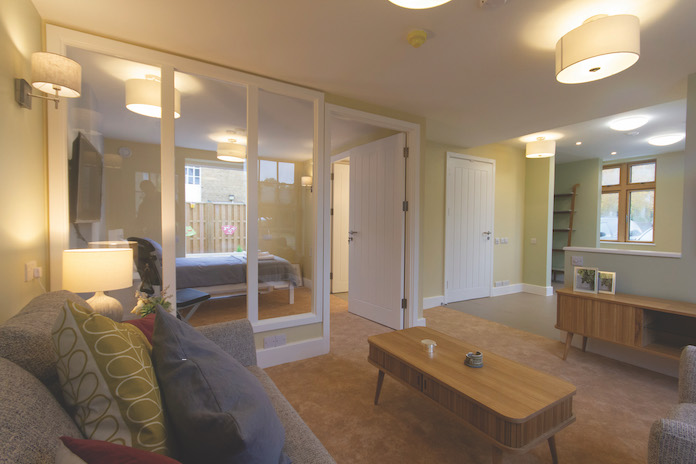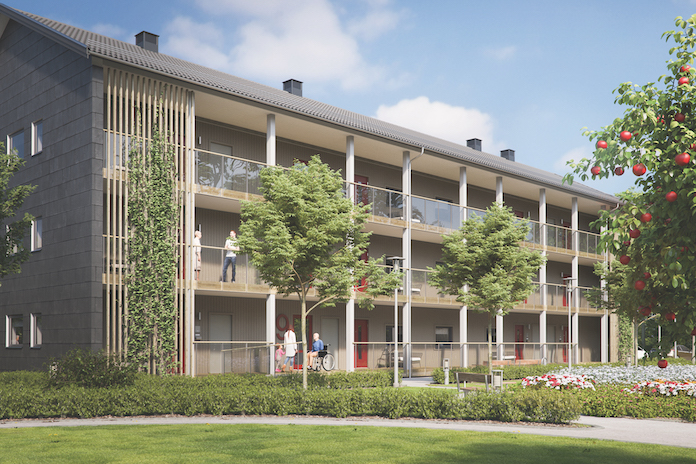
The built environment sector has an important role to play in tackling dementia’s growing impact on society. Will Mann explains.
There are forecast to be more than one million people in the UK living with dementia by next year. As the country’s demographic gets older, the condition is becoming an increasing strain on society, with care costs around £40,000 a year per person.
Dementia is particularly relevant to the built environment, for two reasons. Firstly, the buildings the industry designs and constructs are rarely suited to dementia sufferers – 93% of homes lack basic accessibility features. Secondly, with an ageing workforce, many in construction may be affected by dementia before they retire.
The Alzheimer’s Society is one of the leading dementia charities – an estimated 60%-80% of dementia cases are caused by Alzheimer’s – and will be raising awareness of the condition on 21 September, World Alzheimer’s Day. It is also involved with several built environment initiatives.
The CIOB recently became one of the society’s ‘Dementia Friends’ and is working with the organisation to help the construction sector become more dementia-friendly. Meanwhile, dementia design principles are being developed by the BRE, through demonstration houses, and by Skanska and Ikea in Sweden.
“We want to see an increased number of people with dementia able to live longer in their own homes,” says Alice Billin, partnerships officer at the Alzheimer’s Society. “This can only be achieved by improving the homes people live in and the public buildings they visit. Across the built environment sector, organisations can make a valuable contribution to support people with dementia facing these challenges.
“Dementia causes memory loss which leads to issues navigating around the community and the home. People can have difficulty recognising familiar places or objects. Dementia can also cause issues with vision and perception. For example, a welcome mat by a front door can look like a black hole, meaning people with dementia may feel unable to go in and out of their own home.”
Using technology to identify behaviour patterns and adapt
Two years ago, the BRE Innovation Park near Watford opened its dementia demonstration home. This involved refurbishing an existing Victorian terraced house with accessibility features for dementia sufferers. Partners include architect Halsall Lloyd and Loughborough University.

The BRE dementia demonstration house has an open-plan interior with clear lines of sight
“We picked a refurbishment for the demonstrator as there is mounting clinical evidence of the harmful effects caused to dementia sufferers by moving house,” says BRE group director David Kelly.
Interest has come from across the built environment and care sector, Kelly says. The BRE has subsequently developed 12 parameters to provide a consistent and measurable approach to home and building adaptation, covering areas such as decoration, colours and textures, line of sight and views to green.
The house features smart technology. “These include sensors monitoring indoor air quality, automatically lighting control systems, windows which open automatically at a certain temperature, connected to the building management system (BMS),” says Kelly.
“There is other technology that could be deployed, such as biometric sensors worn against the skin, linked to the BMS. As a person’s body temperature changes, the heating system adjusts.”
Then there are behavioural sensors, installed at the dementia house on Scotland’s BRE park, at Ravenscraig.
“These sensors track movement, such as when someone has gone to the bathroom, or how long they have been sat on a chair,” Kelly explains. “We’re looking at identifying patterns of behaviour and flagging up any concerns so carers can respond appropriately. There are legal issues to consider but we do see more and more of this technology being used.”
Beyond adapting existing properties, Kelly is also looking at new housing and is considering a new-build demonstrator home.
“Can we introduce subtle changes to the designs of new homes that futureproof them so that elderly people or dementia sufferers can continue living in them?” he says. “For example, including provision for wet rooms downstairs, demountable partitions, views to green.
“There could be a kitemark certification scheme, like BREEAM, so that people buying a home know it has been adapted or futureproofed for dementia sufferers. Ideally, we would like this to be mandated in building regulations and planning requirements.”
Kelly has been promoting the idea to the Dementia and Housing Working Group, a body which includes government departments, the NHS, Homes England, the Alzheimer’s Society and various industry bodies, and says “the response has been positive”.
Learning from international designs
Abroad, Sweden is also pioneering housing designs that accommodate dementia sufferers. SilviaBo is a housing concept launched by BoKlok, the prefabricated timber homes joint venture between Skanska and Ikea, in partnership with Queen Silvia of Sweden and her foundation.

The Swedish SilviaBo dementia-friendly housing concept by BoKlok
BoKlok stresses that SilviaBo is a ‘home for all’, designed to allow elderly people to continue living there as they get older or develop dementia. Many design principles are similar to those in the BRE demonstration home, including clear wayfinding and signage and high-contrast colours for fittings such as toilet seats and shower railings.
The first six apartments were completed outside Stockholm last year.
Is dementia a concern in the construction workforce?
Dementia onset is most common among the over-65s, but the risks increase with age and the condition can begin as early as the mid-30s. That should be a worry for the built environment industry, with one in every five UK-born construction workers aged over 55.
“With construction having an ageing workforce, the industry is definitely likely to be affected by dementia,” says Alice Billin of the Alzheimer’s Society. “There will also be a lot of people who are carers or family members of people living with dementia who will need support emotionally and to help them continue working.”
There is no specific guidance for organisations on screening workers for dementia nor is it their responsibility to do so, she says.
“What is important,” says Billin, “is creating a dementia-friendly and supportive work environment where people know they can disclose a dementia diagnosis and know that their managers will be supportive of them to help them adapt if they need to. Organisations can also set up carers’ forums and safe spaces to talk about these issues.”
The CIOB Academy’s course, Dementia Friends and the Built Environment, aims to provide industry professionals with a better understanding of dementia and its relevance to the built environment.
Further details: www.ciobacademy.org/course/dementia-awareness










